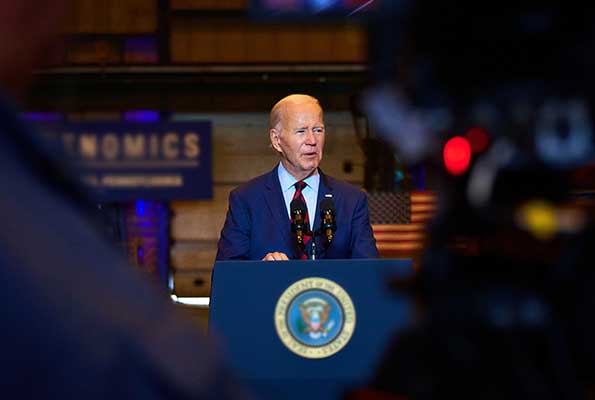United States President Joe Biden embarked on what could be the most perilous journey of his presidency to the Middle East to find a balance between backing Israel in its conflict with Hamas, avoiding a tragedy in Gaza, and triggering a war in the Middle East.
The US President flew into a conflict zone for high-stakes discussions with Prime Minister Benjamin Netanyahu. After those talks, the President is supposed to Jordan for a four-way summit with regional leaders.
This diplomatic push by President Joe Biden will be one of the riskiest bets of his lengthy career, in both political and security terms. It will also be a test of the United States’ influence in a volatile region.
As US Secretary of State Antony Blinken announced Joe Biden’s visit during his lengthy diplomatic journey, he said, “He’s coming here at a critical moment for Israel, for the region, and for the globe.”
The New York Times referred to it as a “journey loaded with risks.”
Joe Biden went on a trip to the war-torn Ukraine that took place a year ago to show support for the Ukrainian government’s fight against Russian occupation.
According to Blinken, the president intended to demonstrate his “ironclad” support for Israel after Hamas breached Israel’s heavily defended border with Gaza on October 7. Hamas was responsible for the deaths of over 1,400 people, the majority of whom were innocent civilians.
In Jordan, Joe Biden will meet with King Abdullah II of Jordan and President Abdel Fattah al-Sisi of Egypt. Jordan and Egypt were the first two Arab countries to make peace with Israel. Joe Biden was also supposed to meet with Palestinian leader Mahmud Abbas, who is opposed to Hamas and is based in the West Bank, but he withdrew his attendance.
Discussions with Sisi would likely centre on his refusal, as of yet, to allow the Rafah border gate to Palestinians fleeing the anticipated Israeli onslaught who have gathered in large numbers in southern Gaza.
The royal palace of Jordan has expressed their optimism that the upcoming four-way meeting will help “revive the peace process” between the Palestinians and Israel, which has been in a stalemate for several years.
The results of President Joe Biden’s trip will be closely monitored by the rest of the world, including America’s adversaries China and Russia.
However, the President of the United States has responded to concerns that Washington may be overextended if it continues to support allies who are engaged in conflict in both Israel and Ukraine by denying those concerns.
Soaring Oil Prices
Tensions and uncertainty rose before Joe Biden visited Israel and so did oil prices. Brent futures increased USD 0.74 to USD 90.39 a barrel after falling more than a dollar on October 23. WTI crude increased from USD 0.69 to USD 87.35.
A week before that, both oil benchmarks rose on concerns that the Middle East crisis could escalate. Global benchmark Brent rose 7.5% in its biggest weekly rise since February 2023.
After OPEC-member Iran pledged “pre-emptive action” from the “resistance front” of its allies, including Hezbollah in Lebanon, Joe Biden will visit Israel to support the latter’s war on Hamas and rally Arab states to prevent a regional conflict.
Edward Moya, senior market analyst at OANDA, said oil prices are fluctuating as energy traders wait to see if the United States’ diplomatic efforts would prevent the Israel-Hamas confrontation from becoming a regional war.
He said the latest US economic statistics revealed that the consumer is still strong and industrial production is gradually going up, which boosted oil demand.
“The market is incredibly tight right now and that’s why we’re so nervous,” Price Futures Group analyst Phil Flynn said.
Saudi Aramco’s CEO recently claimed that the business could increase oil production within weeks if needed as global demand reaches a record level by 2023-end.
OPEC+, which includes Russia and other major partners, has slashed supply since 2022 to ensure market stability.
Oil markets await US oil inventory data from the American Petroleum Institute (API) on Tuesday and the Energy Information Administration (EIA).



